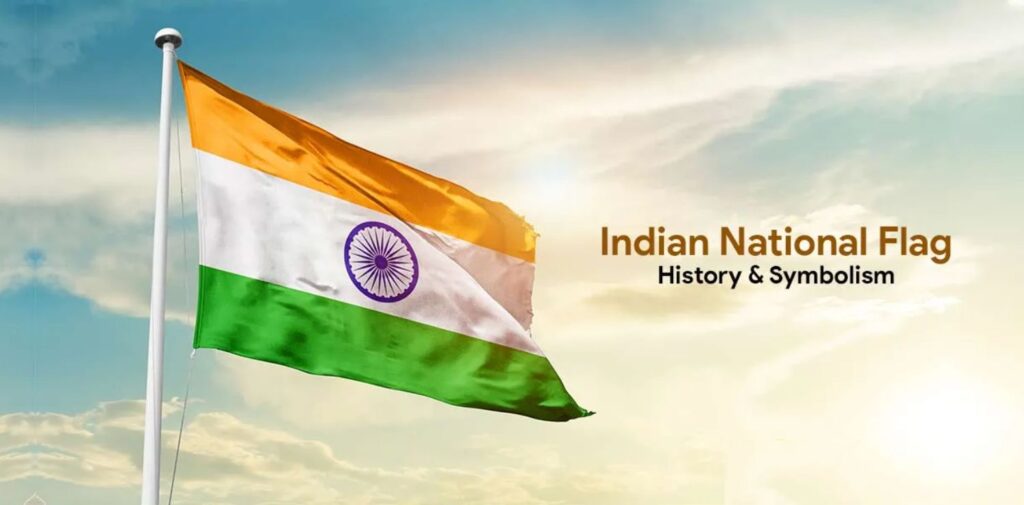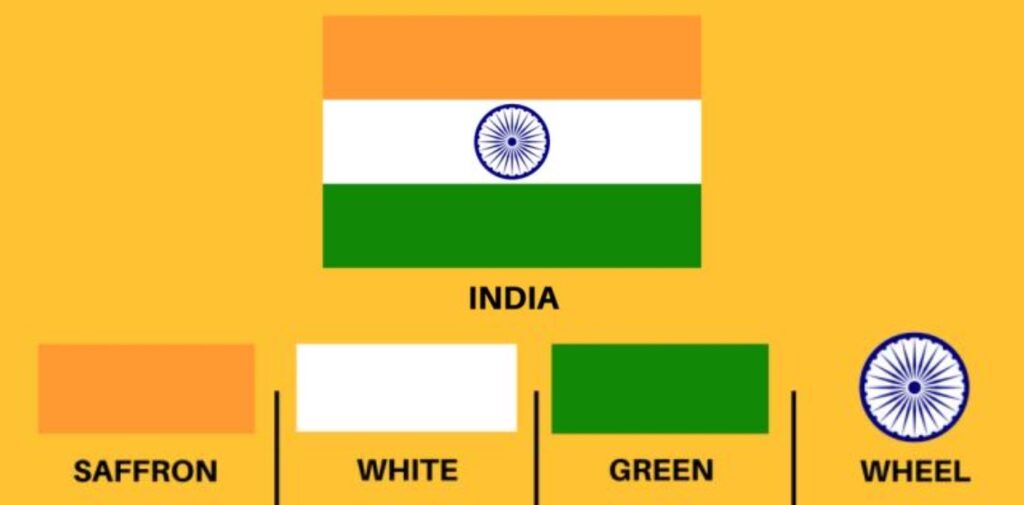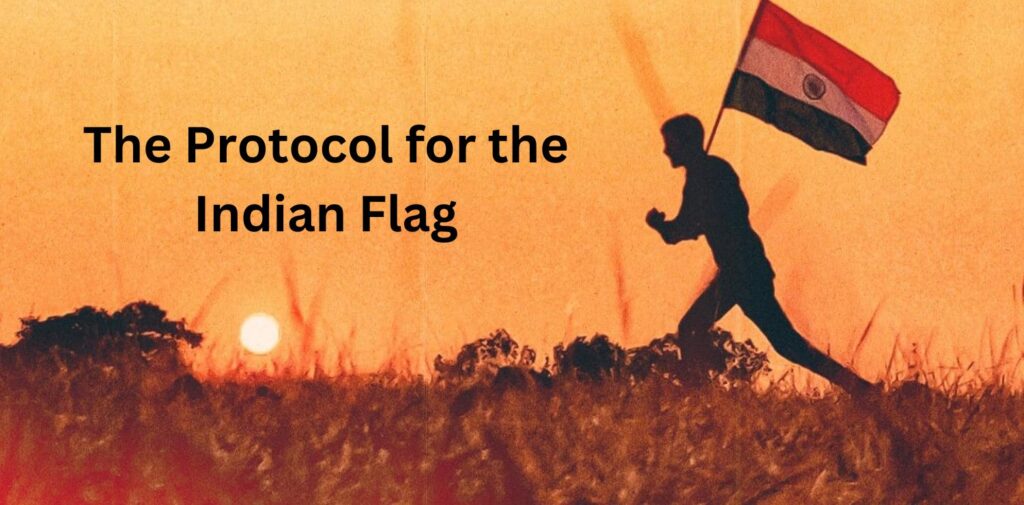The national flag is a powerful symbol of a country’s identity, heritage, and values. For India, The Indian National Flag represents the spirit of freedom, unity, and diversity that has shaped its journey as a nation. The Indian National Flag is not just a piece of cloth, but a symbol of the sacrifices made by the people of India to achieve independence from British colonial rule. This article explores the adoption of the Indian National Flag, its design, and the deep meanings behind its colours and features.
The Adoption of the Indian National Flag
India’s struggle for independence was long and difficult, involving years of protest, resistance, and sacrifices by millions of Indians. As the nation approached its independence, it became important to have a symbol that would unite the people and represent the country’s aspirations for a free, sovereign state. The Indian National Flag came into being as a result of this need.

The Path to Adoption: A Brief History
The idea of a national flag for India emerged early in the 20th century. Before the current national flag was adopted, there were several different flags used by various political and social groups in India, but none had the recognition of a national symbol. The first flag associated with the Indian independence movement was designed in 1906 by the Indian National Congress. This flag had three horizontal stripes of red, yellow, and green, and included several symbols such as a crescent and a star. While this flag was an important step in the national struggle, it did not become the official flag of India.
The next significant development came in 1921, when Pingali Venkayya, an Indian freedom fighter, designed a new flag for the Indian National Congress. This flag had two colours—red and green—and included a symbol of the spinning wheel, or Charkha, which became a symbol of self-reliance and Gandhi’s idea of non-violence and self-sufficiency. This flag was used in many of the Congress sessions, but it still wasn’t the official national flag of India.
The turning point came during the Quit India Movement in 1942, and by 1947, when India gained independence, there was a growing consensus about the need for a unified national flag that would be accepted by all communities and reflect India’s democratic values. After intense debate and discussions, a new flag was adopted, which became the official Indian National Flag.
On July 22, 1947, just a few weeks before India gained independence, the Constituent Assembly of India approved the design of the flag. The flag was adopted as the official national flag of independent India on August 15, 1947, the day when India formally became a free country.
The Design of the Indian National Flag
The Indian National Flag is a horizontal tricolour with three equal bands of colour: saffron at the top, white in the middle, and green at the bottom. In the centre of the white band, there is a navy-blue wheel, known as the Ashoka Chakra, with 24 spokes. The flag is rectangular, with a ratio of 2:3 (i.e., the length is twice the height).

Key Elements of the Flag:
- Saffron Band (Top Band): The top band of the flag is saffron, which is a deep orange colour. This colour represents courage, sacrifice, and the spirit of renunciation. It is also associated with the strength and courage of the people of India who fought for independence.
- White Band (Middle Band): The middle band of the flag is white, symbolizing truth, peace, and purity. It represents the country’s commitment to truth and non-violence, which were central principles of the freedom movement led by Mahatma Gandhi.
- Green Band (Bottom Band): The bottom band is green, which signifies fertility, growth, and auspiciousness. Green is also associated with the country’s commitment to prosperity and agricultural growth. It reflects the hope for a bright future for India, based on sustainable development and harmony.
- The Ashoka Chakra: At the centre of the flag is a navy-blue wheel known as the Ashoka Chakra. It has 24 spokes and represents the wheel of law, which is based on the teachings of Emperor Ashoka, a Mauryan ruler who embraced Buddhism and promoted the principles of non-violence, justice, and dharma (righteousness). The Ashoka Chakra symbolizes the eternal wheel of progress and represents the nation’s drive towards progress and justice. The 24 spokes represent the 24 hours in a day, symbolizing the continuous cycle of time.
The Symbolism Behind the Colors and Features
The design and colours of the Indian National Flag were chosen carefully to reflect the nation’s rich history, values, and aspirations. Let’s take a closer look at the deeper meanings behind each of these elements.
- Saffron: Courage and Sacrifice: The saffron colour on the flag stands for the courage, bravery, and sacrifices made by the people of India during the struggle for independence. It is a colour associated with spiritualism and asceticism. The colour saffron represents the renunciation of materialism, and it reminds the citizens of India about the sacrifices made by the freedom fighters and leaders who struggled for the country’s independence. It also reflects the country’s commitment to the ideals of selflessness and service to others.
- White: Peace and Truth: The white colour in the middle band of the flag symbolizes peace, truth, and non-violence. These values were integral to the Indian freedom struggle, especially under the leadership of Mahatma Gandhi, who advocated for ahimsa (non-violence) and satya (truth). The white colour also signifies unity and harmony among India’s diverse communities, cultures, and religions. India, as a secular state, is committed to fostering peace and understanding among all its citizens, irrespective of their differences.
- Green: Prosperity and Growth: The green colour represents fertility, agriculture, and sustainability. India’s economy is largely agrarian, with a significant portion of the population dependent on farming. The green band, therefore, symbolizes India’s commitment to agricultural growth and sustainable development. It also reflects the hope for a better future for the country, with growth, harmony, and prosperity for all citizens.

The Ashoka Chakra: Dharma, Law, and Progress
The Ashoka Chakra at the centre of the flag is not just a decorative symbol; it carries deep philosophical significance. The chakra represents the wheel of dharma, or the wheel of righteousness, which reflects the commitment of the Indian state to uphold justice and law. The 24 spokes of the Ashoka Chakra are a reminder of the continuous need for progress and movement, suggesting that India must keep moving forward in its journey toward development, peace, and prosperity. The Chakra also represents the eternal cycle of life, emphasizing that change is constant, and progress is a never-ending process.

The Protocol for the Indian Flag
The Indian National Flag is held in high regard, and there are strict protocols regarding its use and display. The flag must always be displayed with respect, and certain rules are followed to ensure its dignity is maintained.
- Respect and Reverence: The Indian flag must never touch the ground or be used as clothing, drapery, or a covering. It must always be displayed in a respectful manner.
- Size and Dimensions: The size of the flag varies depending on its use, but it always follows the 2:3 ratio. For official government use, the flag must be of the correct proportions and colours as defined by law.
- Raising the Flag: The national flag is raised at significant events, such as Independence Day (August 15) and Republic Day (January 26), when the Prime Minister or the President of India traditionally hoists the flag.
Conclusion
The Indian National Flag is much more than just a piece of cloth; it is a powerful symbol of the nation’s history, struggles, and aspirations. Adopted on July 22, 1947, and formally hoisted on August 15, 1947, the flag represents courage, peace, prosperity, and justice. Its colours and the Ashoka Chakra remind the citizens of India of the values of unity, progress, and righteousness that the country strives to uphold.
The flag serves as a source of inspiration and pride for every Indian, reminding them of the sacrifices made by the freedom fighters and the continued journey of the nation toward building a better future. When we see the Indian National Flag fluttering in the wind, it is not just a symbol of the country’s independence, but also a call to live by the values of unity, peace, and progress, as envisioned by the leaders who fought for India’s freedom.




